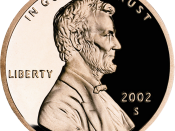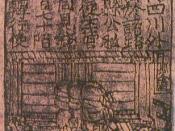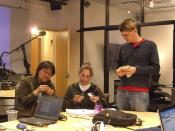Throughout history civilizations have exchanged goods and even developed currency. Whether coins or cloth these exchanges of goods all had value to the trading partner. In modern day civilizations we use paper currency and coins. To give these objects worth we must be able to back them with something that has value.
Money is a means of exchange. Money is not the exchange of one commodity for a different commodity, such as trading a bushel of corn for a yard of cloth that is barter. Money, like barter goods has a publicly accepted value but is also easy to carry. Beaver pelts have been used as money. But money need not have an intrinsic value. Money is a measurement of value that the whole community agrees upon, whereas barter, requires everyone to know the value of ever commodity being exchanged on the market
Money is the center in every society.
It allows us to trade money for goods or services. Our Federal Reserve Notes have economic value and intrinsic values. These "Federal Reserve Notes" are backed up by Intrinsic value isn't the same thing as economic value. People are willing to take money in exchange because it is useful to them. They trust that they will in turn be able to exchange it for something else they want. An "exchange" isn't always the same thing as a "trade". If a good or service is exchanged for money, that is only half of a trade. Money itself is incapable of satisfying desires; its only use is being exchanged for things that do. So the other half of the trade is when one's money is exchanged for goods. The main thing that gives Federal Reserve Notes their value is people's faith in them. One big contributor to that is faith...


